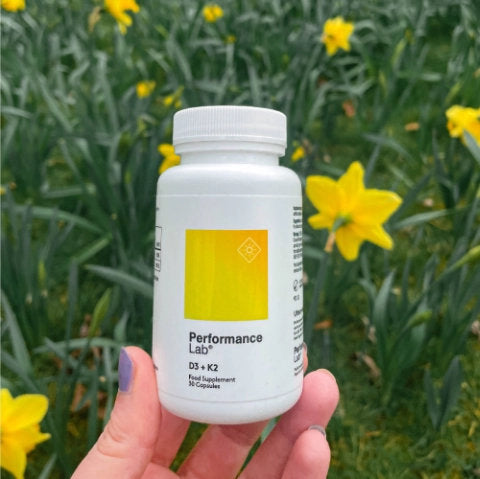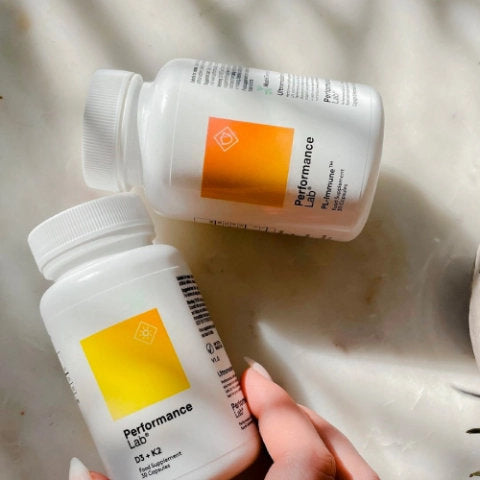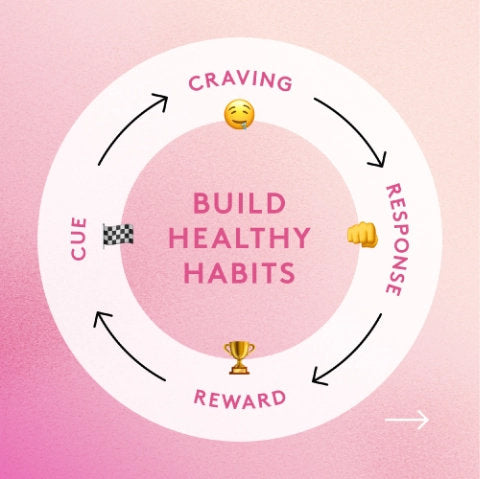You know the boy band you were obsessed with when you were younger, but everyone only ever talked about the lead guy?
He claimed all the fame and went on to win awards, but the other guys kind of fell by the wayside… Vitamin K tends to be one of those vitamins that gets forgotten and never really comes close to winning that award—but it should.
As a significant component of several vitamin-K-dependent proteins, the body requires sufficient levels of vitamin K for normal blood clotting, bone metabolism, and calcium homeostasis, among other roles.
While commonly lumped in with the other fat-soluble vitamins, this vitamin has a solid standalone role that deserves its own award.
So, we’re diving into all things vitamin K—what it is, the benefits of vitamin K, signs you’re deficient, and how much you need to maintain levels.
What Is Vitamin K?
Vitamin K, which actually isn’t a ‘single’ vitamin but rather a group of fat-soluble compounds, plays a significant role in several critical body functions, making it an essential nutrient.
The discovery of vitamin K dates back to the early 1920s when a scientist found that restricting certain components of a chick’s diet resulted in internal hemorrhages and other symptoms similar to scurvy, but were not cured by administering large doses of vitamin C 1.
Cod liver oil concentrates (rich in vitamins A and D) did not benefit the condition either. Still, cereals and seeds offered protective effects, prompting the conclusion that the bleeding syndrome was due to insufficient levels of an essential dietary component that wasn’t vitamins A, D, and C.
Further research showed that various plant and animal foods contained a compound that could help bleeding; this antihemorrhagic factor was a new fat-soluble vitamin termed “Koagulations vitamin” or vitamin K.
The main role of vitamin K is to function as a cofactor for several vitamin K-dependent proteins that require carboxylation for optimal activity, but dietary intake of vitamin K is often a limiting factor for these carboxylation reactions 2.
For example, osteocalcin or bone Gla protein—which are required for normal bone metabolism, is only partially carboxylated in normal individuals but becomes fully carboxylated with supplemental vitamin K.
Like most other vitamins, there are a couple of forms you’ll come across both in food and supplements: K1 (phylloquinone) and K2 (menaquinone).
K1 vs. K2
Naturally occurring vitamin K compounds derived from plant foods are called phylloquinone or vitamin K1, but there is also a series of bacterial-derived menaquinones (MKs) that form vitamin K2 and are found in many animal-based food products 3.
These forms contain structural differences in the side chains, which govern many facets of the metabolism of K vitamins, such as their transport, uptake by target tissues, and subsequent excretion.
The important menaquinones are the short-chain MK-4 and the long-chain menaquinones MK-7, MK-8, MK-9, and MK-10, all of which can be obtained through diet.
What’s more, it was recently found that vitamin K1 is taken up primarily in the liver, while vitamin K2 preferentially accumulates in arteries and extrahepatic locations (those outside of the liver) 2.
Benefits Of Supplementing Vitamin K
1. Stronger Bones
Traditionally, we always look towards calcium and vitamin D for maintaining strong bones, but it’s not all about them. Vitamin K plays a significant role in supporting bone health and stability via calcium metabolism.
The calcium-binding actions of two proteins—matrix GLA protein (MGP) and osteocalcin—both of which are required to build and maintain bone strength, are activated by vitamin K2 4, 5.
Several human studies have shown that vitamin K not only increases bone mineral density in osteoporotic people, but can also reduce fracture rates 6.
Several mechanisms have been proposed for vitamin K’s modulation of bone metabolism, but the two key ones include gamma-carboxylation of osteocalcin, a protein involved in bone mineralization, and the positive effect of vitamin K on calcium homeostasis, which we all know has a major role in bone strength.
Further evidence also suggests that vitamin K and vitamin D work synergistically to enhance and maintain bone density.
What’s more, impaired function of osteocalcin and MGP as a result of incomplete carboxylation from low vitamin K increases susceptibility for the development of osteoporosis and vascular calcification 7.
2. Better Blood Clotting
If you know anything about vitamin K, it’s likely about its role in blood clotting. While platelets and red blood cells may come to the forefront of your mind when clotting comes up in discussion, vitamin K actually plays a massive role in the process that prevents excessive bleeding from even the smallest of injuries.
Vitamin K is important for the formation of several pro-blood clotting proteins called factors II (prothrombin), VII, IX, and X, which form the core of the clotting cascade, and anticoagulant (anti-blood clotting) proteins called proteins C, S, and Z 8. These clotting proteins are required to stop bleeding and allow healing initiation.
Even though the clotting process is required to prevent bleeding out, some people’s blood clots too easily, which is why blood-thinning medications like warfarin (Coumadin) are prescribed; they function by antagonizing the action of vitamin K.
3. Reduces Blood Pressure
While diet and exercise play a major role in reducing blood pressure and improving cardiovascular health, so does vitamin K. It’s important for supporting heart health and may reduce the risk of hypertension and cardiovascular disease.
Studies suggest that low vitamin K and vitamin D status are associated with increased cardiovascular risk due to a joint interaction between the two vitamins and vascular health 9.
A 2017 study looked at the effects of vitamin K and D status on hypertension and blood pressure and found that low vitamin D and K status was associated with increased systolic and diastolic blood pressure by 4.8 mmHg and 3.1 mmHg, respectively 9.
A similar trend was found for the incidence of hypertension, in which low vitamin D and K increase the risk of high blood pressure and hypertension, which may be because of vitamin K’s interaction with calcium, helping to regulate blood levels.
Vascular calcification—a process whereby minerals like calcium are deposited in blood vessels and become calcified, thereby blocking blood flow over time—is a common factor involved in aging.
However, a sufficient vitamin K intake can help prevent mineralization, thus staving off this process and keeping blood pressure low.
4. Lowers Risk Of Heart Disease
Like blood pressure, vitamin K’s role in preventing blood vessel calcification by regulating calcium homeostasis also reduces the risk of heart disease.
There are 17 vitamin K-dependent proteins that are involved in regulating soft-tissue calcification, some of which include osteocalcin, matrix Gla protein (MGP), and potentially Gla-rich protein; they all inhibit soft-tissue calcification and require vitamin K-dependent carboxylation for activity 10.
A 2004 study following participants over 7-10 years found that people with the highest intake of vitamin K2 were 52% less likely to develop artery calcification and had a whopping 57% lower risk of dying from heart disease 11.
Similarly, another study found that women with the highest intake of vitamin K2 exhibited a significantly lower risk of heart disease 12; for every 10mcg of K2 consumed, the risk of heart disease decreased by a staggering 9%.
5 Signs And Symptoms You’re Not Getting Enough Vitamin K
While several food sources are rich in vitamin K1 and K2—fermented foods, high-fat dairy products, leafy green vegetables, and even supplements—getting what you need isn’t always the easiest.
Signs of a vitamin K deficiency may not be the most obvious, but generally involve issues around bleeding. Bleeding or hemorrhaging is one of the most obvious signs of vitamin K deficiency, often seen from the nose, a wound, in the stomach, or the intestine.
A vitamin K deficiency can result from:
- Poor nutrition (lack of dietary vitamin K)
- Fat malabsorption (prevents absorption of fat-soluble vitamin K)
- Antibiotic use (certain antibiotics may cause the body to produce less vitamin K in the intestine, while others may cause vitamin K to become less effective)
- Taking blood-thinners
As a result, be on the lookout for these five cardinal signs of vitamin K deficiency:
- Easy bruising
- Small blood clots underneath the nails
- Bleeding in mucous membranes that line areas inside the body
- Dark black, tar-like stool that contains blood
- Weakened bones (increased risk of fractures)
Ideal Vitamin K Dosage
Preventing a vitamin K deficiency doesn’t have to be difficult, as it’s widely available through a multitude of dietary sources and supplementation.
However, research does suggest that many of the benefits associated with vitamin K are linked to vitamin K2 as opposed to K1; the conversion process from K1 to K2 isn’t very efficient, meaning what you’re eating in the way of K1 probably isn’t offering much benefit. As a result, supplementing with K2 is ideal for maintaining adequate vitamin K levels.
The Institute of Medicine suggests a daily intake of 90 mcg/day for women and 120 mcg/day for men, which can be obtained through diet or supplementation.
Some of the best sources of dietary vitamin K2 include:
- Natto
- Liver (chicken, duck)
- Eggs
- Meat
- Full-fat dairy products (butter, yogurt, milk, cheese)
References
- P Newman, MJ Shearer. Vitamin K metabolism. Subcell Biochem. 1998;30:455-488.
- DW Stafford. The vitamin K cycle. J Thromb Haemost 2005;3:1873–8
- MJ Shearer, P Newman. Metabolism and cell biology of vitamin K. Thromb Haemost. 2008;100(4):530-547.
- MJ Shearer, X Fu, SL Booth. Vitamin K nutrition, metabolism, and requirements: current concepts and future research. Adv Nutr. 2012;3(2):182-195.
- D Misra, SL Booth, I Tolstykh, et al. Vitamin K deficiency is associated with incident knee osteoarthritis.Am J Med. 2013;126(3):243-248.
- P Weber. Vitamin K and bone health (published correction appears in Nutrition 2001 Nov-Dec;17(11-12):1024). 2001;17(10):880-887.
- E Cranenburg, LJ Schurgers, C Vermeer. Vitamin K: The coagulation vitamin that became omnipotent. Thromb Haemost. 2007;98(01):120-125.
- C Vitamin K: the effect on health beyond coagulation - an overview. Food Nutr Res. 2012;56:10.3402/fnr.v56i0.5329.
- AJ van Ballegooijen, A Cepelis, M Visser, IA Brouwer, NM van Schoor, JW Joint Association of Low Vitamin D and Vitamin K Status With Blood Pressure and Hypertension.Hypertension. 2017;69(6):1165-1172.
- E Theuwissen, E Smit, C The role of vitamin K in soft-tissue calcification. Adv Nutr. 2012;3(2):166-173.
- JM Geleijnse, C Vermeer, DE Grobbee, et al. Dietary intake of menaquinone is associated with a reduced risk of coronary heart disease: the Rotterdam Study. J Nutr. 2004;134(11):3100-3105.
- GC Gast, NM de Roos, I Sluijs, et al. A high menaquinone intake reduces the incidence of coronary heart disease. Nutr Metab Cardiovasc Dis. 2009;19(7):504-510.











